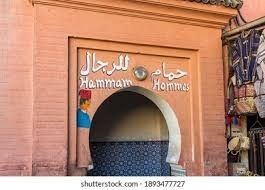*Bsaha o Raha Lhammam!
The week has been a rollercoaster of emotions, immersion, and intercultural/language learning for our lovely, freshly arrived CIEE Session I cohort of students in Rabat! SO it's about that time of the week to rejuvenate and re-energize the spirits; and - when you're in Morocco - there is no better way than indulging in a warm, relaxing Hammam.
Hammams (sometimes referred to as Turkish baths) are communal baths (separated by gender) that, for hundreds and hundreds of years, have served as places for cleansing and social gathering. Moroccans would often spend hours and hours in hammams typically on weekends (or prior to Friday prayers), both to wash up as well as catch up with friends. The typical layout of a Hammam structure includes three to four rooms, starting from the changing room, moderate room(s), then the hottest room all the way inside. The building lies on an underground oven(s) powered usually by wood or coal which provides heat throughout the rooms.
A hammam session would usually involve a particular process before, during, and after showering: To begin with, Hammam attendees use a homemade, traditional, dark brown soap (locally known as Saboun Lbeldi), which they meticulously apply on their bodies. Afterwards they lie on a rubber mat for an extended period of time, allowing the body to warm up and relax. Next, they rinse their skin carefully before proceeding to scrubbing the skin using L'kis, a rough-ish hand glove, allowing to exfoliate dead skin off the body, which makes for a satisfying feeling, followed by a regular body wash.
Equipped with all the new knowledge about Moroccan Hammams, it's up to our CIEE students to embark on one of the most authentic cultural experiences a Morocco visitor can ever have!
So Bsaha o Raha CIEE!!
*Darija Arabic expression meaning good health
Related Posts

‘Thank You:’ A look inside a culture built on collectivism
I am grateful I had the opportunity to better understand collectivism in such a diverse and rich country. In Morocco I learned just how much collective thinking enhanced the quality... keep reading
The World Cup: A Moment in History
This World Cup has become about much more than fútbol. Morocco’s historic victory over two of its former colonizers, Spain and Portugal has hundreds of millions taking part in adopting... keep reading



